1. The oldest form of catechetical presentation
a. Public instruction delivered to adults and children indiscriminately on the occasion of the celebration of the Eucharistic liturgy
b. A myriad of devices can and should be worked out to meet the special needs of the young
2. Earliest non-canonical handbook of instruction
a. Didache or Teaching of the Twelve Apostles
b. Sixteen brief chapters; possible multiple authorship
c. Stemming from Egypt, Syria or Palestine as early as 60 or 90 possibly as late as 130 A.D.
d. No professedly dogmatic instruction; only Christian morality
e. Simple catechism-like division between the tow ways leading to life and death
3. Apollos described in the Acts (18:25)
a. Described as katechemenos—“instructed”
b. Knowledge of Christ made the term “catechesis” meaning teaching or the message taught.
4. Origen
a. Speaks of the books of Esther, Judith, Tobias, and Wisdom
b. Study of Divine things
c. From him and Tertullian we learn of the practice of infant baptism
d. Apostolic Tradition described in the year around 215
e. Homilies are our first clear indication of the presence of the catechumen at Mass
5. Irenaeus, bishop of Lyons (late second early third centuries)
a. Proof of the Apostolic Preaching
b. More apologetic the catechetical in intent
c. Intent is the instruction for Christians
6. St. Cyril
a. Simple and clear teacher
b. Starts with three catechetical talks
c. Transcends into thirteen distinct catecheses on the creed as mid-fourth century Jerusalem recited it
d. Not accounted theologically rich or complex
e. Sermons are parochial preaching of a high order
7. Gregory of Nyssa’s
a. Katecheseos logos or Great Catechetical Discourse (same period as St. Cyril)
b. Controversial or more philosophical
c. The great dogmas are expounded
d. Suited more to masters of the catechumenate than to the catechumens
8. Fifth through Eight centuries
a. Recasting of the whole concept of religious instruction
b. Nothing essential was sacrificed
c. Simplicity of approach succeeded the highly organized catechumenate days
9. John Gerson (1363-1420)
a. Chancellor of the University of Paris
b. Authored On Drawing the Little Ones to Christ
1) Considers four matters in the field of teaching
a) How needful it is to Christ and the Church that the little ones come
b) Types of scandal that can keep them off
c) The proper zeal that should mark those who lead the little ones to Christ
d) Personal apologia against his detractors as to why, despite the gap between his conduct and a child’s, he nonetheless can bring them to Christ
10. Martin Luther (late fifteenth century)
a. 1523 earliest catechetical writings, from the Bohemian Kinderfragen
b. 1526 employed the Wittenberg translation
c. 1529 first edition of his catechism
11. CCD in Europe
a. Milan Confraternity; prescribed principles and methods
b. Catechism of the Council of Trent; teachers should adapt their words to the age, background, and mental capacity of the learners
c. CCD in Rome was established in 1560
12. CCD in the United States (1902-present)
a. Baltimore Catechism
1) First edition 1885; encountered serious resistance in many classrooms
2) First movement for religious education in every classroom
b. Bishop of Kansas City, Bishop O’Hara (1930-1956)
1) National figure in the Confraternity of Christian Doctrine movement
2) 1935 by the Decree on the Better Care and Promotion of Catechetical Instruction from the Holy See, stipulated that the Confraternity of Christian Doctrine shall be set up in every parish before all other organizations
3) Ecumenical movement sparked by Vatican II originally devised by O’Hara
4) Religious Vocations Schools initiated by O’Hara
5) Catholic Rural Life Bureau
Christian Education
"Since all Christians have become by rebirth of water and the Holy Spirit a new creature(8) so that they should be called and should be children of God, they have a right to a Christian education. A Christian education does not merely strive for the maturing of a human person as just now described, but has as its principal purpose this goal: that the baptized, while they are gradually introduced the knowledge of the mystery of salvation, become ever more aware of the gift of Faith they have received, and that they learn in addition how to worship God the Father in spirit and truth (cf. John 4:23) especially in liturgical action, and be conformed in their personal lives according to the new man created in justice and holiness of truth (Eph. 4:22-24); also that they develop into perfect manhood, to the mature measure of the fullness of Christ (cf. Eph. 4:13) and strive for the growth of the Mystical Body; moreover, that aware of their calling, they learn not only how to bear witness to the hope that is in them (cf. Peter 3:15) but also how to help in the Christian formation of the world that takes place when natural powers viewed in the full consideration of man redeemed by Christ contribute to the good of the whole society.(9) Wherefore this sacred synod recalls to pastors of souls their most serious obligation to see to it that all the faithful, but especially the youth who are the hope of the Church, enjoy this Christian education."
Gravissimum Educationis
Gravissimum Educationis
Thursday, March 19, 2009
Subscribe to:
Post Comments (Atom)
















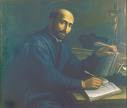









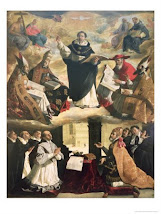
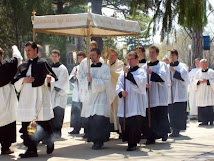

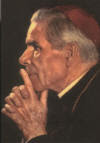

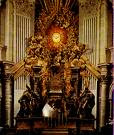
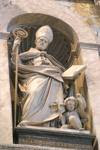



No comments:
Post a Comment